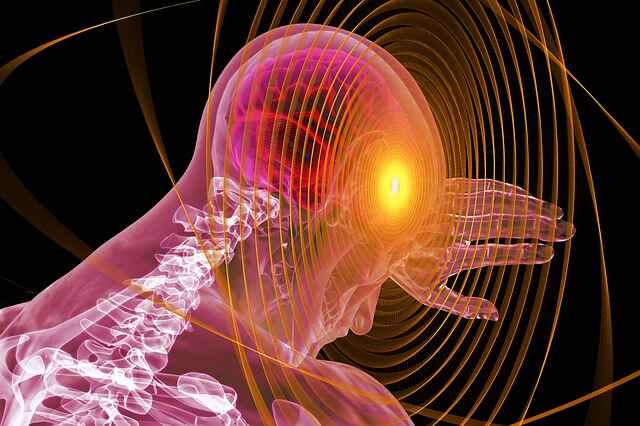Malignant brain tumors pose a significant health challenge as they have the ability to spread rapidly within the brain and spinal cord. As cancerous growths, these tumors demand prompt attention and comprehensive treatment strategies to improve outcomes and prolong survival. This article provides an overview of different types of malignant brain tumors, their symptoms, diagnosis, treatment options, and recovery prospects.
What is a Malignant tumor?
A malignant brain tumor, also known as cancerous, exhibits rapid growth and the potential to spread to other parts of the brain and spine. Unlike non-malignant tumors, which grow slowly and are often localized, malignant tumors pose a greater threat to health due to their invasive nature and propensity for metastasis. Understanding the distinction between malignant and non-malignant tumors is crucial for accurate diagnosis and effective treatment planning.
Also Read 8 Types Of Benign Brain Tumors You Must Know
Types of Malignant Brain Tumors that you must know
Gliomas
Gliomas are the most common adult brain tumor, accounting for 78% of all malignant brain tumors. They develop from the brain’s supporting cells, known as glia. These cells are further classified as astrocytes, ependymal cells, and oligodendroglial cells (or oligos). (Source: AANS)
Gliomas can be identified according to their growth potential and aggressiveness using different grades. Some develop slowly and are not identified as cancers. Some are considered malignant. Malignant gliomas can enter healthy brain tissue and grow swiftly.
Symptoms may also vary depending on the type of glioma, its size, and its rate of growth. (Source)
Also Read: All About Glioma Brain Tumor: Types, Symptoms, Causes, Prevention
Ependymoma
Ependymomas are malignant tumors that can develop in the brain or any portion of the spine, including the neck, upper, and lower back. They begin in the ependymal cells of your spinal cord and the fluid-filled areas of your brain known as ventricles. They are made up of genetically different subtypes of cancers that affect youngsters more frequently than adults.
Unlike other types of cancer, ependymomas rarely spread to other sections of the body. They can, however, spread to multiple areas of your brain or spine. You might not initially notice any problems with ependymomas because they often start small and expand slowly over years. Source
Also Read: All About Ependymoma: Types, Symptoms, Causes, PreventionEpendimoma:
Glioblastoma multiforme
Glioblastoma multiforme (GBM) is the most frequent and most malignant of glial tumors.GBM is a grade 4 glioma brain tumor that develops from brain cells known as glial cells. Glioblastoma multiforme (GBM) is a kind of brain or spinal cord tumor that grows quickly.
Glioblastomas (GBMs), sometimes known as “multiforme” tumors because of their wide range of “glial” brain cell varieties, are referred to as “extremely variable” tumors.
GBMs never spread to other areas of the body from the brain, spine, or central nervous system. Because of their complexity, they are extremely difficult to treat. Source
Also Read: All About Glioblastoma Multiforme: Types, Symptoms, Causes, Prevention
Oligodendrogliomas
Oligodendroglioma is a type of tumor that can appear in the brain or spinal cord. Oligodendroglioma develops from oligodendrocytes, which are cells in the brain and spinal cord that create a chemical that protects nerve cells.
Oligodendrogliomas can grow anywhere in the cerebrum, the biggest portion of the brain. The cerebrum stretches from the top of the head almost to the neck and takes up the majority of the space in the skull. They develop slowly and typically do not invade nearby brain tissue. Although oligodendroglioma can develop at any age, it mostly affects adults.
The symptoms can overlap with those of other types of brain tumors or diseases and vary according to the position and size of the tumor. Source
Also Read: All About Oligodendrogliomas: Types, Symptoms, Causes, Prevention
Astrocytomas
Astrocytomas are tumors that grow from star-shaped astrocyte cells in the central nervous system (CNS). Astrocytoma starts in astrocytes, which are nerve cells’ support cells. Glial cells are astrocytes (the type of cells that provide supportive tissue in the brain).
The largest area of the brain, the cerebrum, is where astrocytomas most frequently develop in adults. The cerebrum uses sensory data to instruct us about our surroundings and how the body ought to react. The cerebrum also regulates reading, thinking, and learning, as well as speaking, movement, and emotions. Source
Also Read: Cervical Cancer: Symptoms, Causes, Risk Factors, Diagnosis, Prevention, Facts
Symptoms and Diagnosis:
Symptoms of malignant brain tumors can vary depending on factors such as tumor size, location, and rate of growth. Common symptoms may include persistent headaches, seizures, cognitive changes, and motor dysfunction. Diagnosis typically involves imaging studies such as MRI or CT scans, followed by biopsy or surgical resection to confirm the tumor type.
Treatment and Recovery:
Treatment for malignant brain tumors often involves a multidisciplinary approach, including surgery, radiation therapy, chemotherapy, and targeted therapies. The goal of treatment is to remove as much of the tumor as possible, alleviate symptoms, and slow disease progression. Despite advances in treatment, recovery from malignant brain tumors can be challenging, with many patients facing long-term physical, cognitive, and emotional effects.
Overall, malignant brain tumors represent a significant health concern, requiring comprehensive management strategies to improve outcomes and quality of life for affected individuals. By understanding the different types of malignant brain tumors, recognizing early symptoms, and pursuing timely diagnosis and treatment, patients and healthcare providers can work together to navigate this complex disease landscape effectively.





